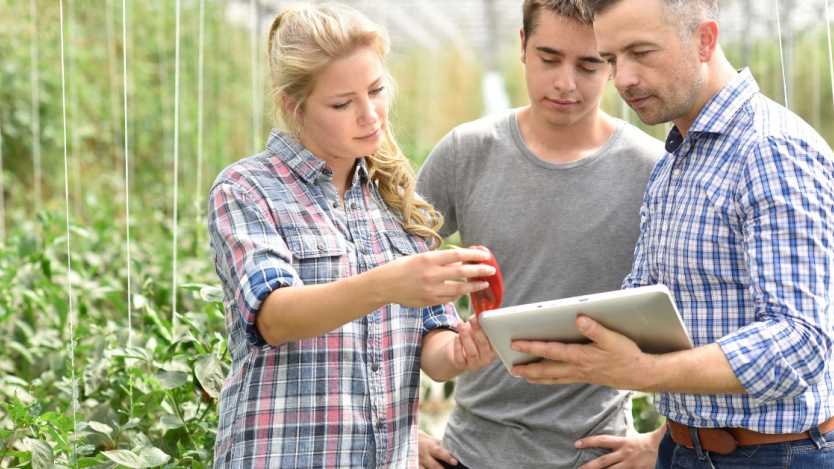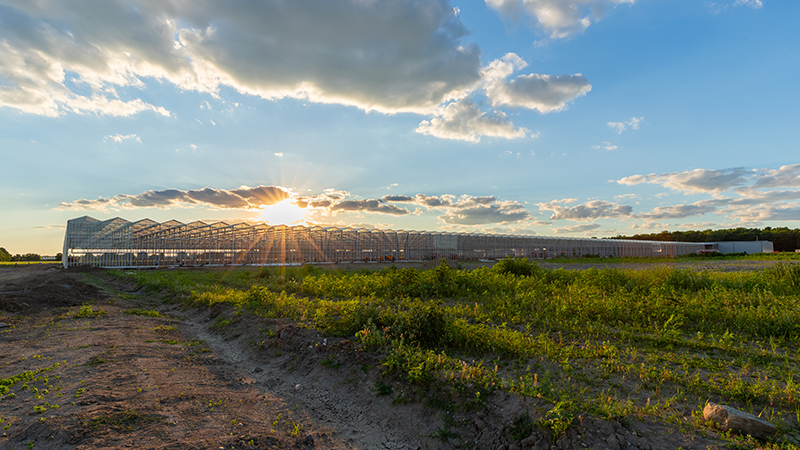How Blockchain Technology Can Work for Greenhouse Growers
 For several years, Blockchain has been labeled as the solution for all data exchange problems. While the technology is not a magic want, it shows promise for raising supply chain digitalization to a higher level. Here’s how.
For several years, Blockchain has been labeled as the solution for all data exchange problems. While the technology is not a magic want, it shows promise for raising supply chain digitalization to a higher level. Here’s how.
What Makes Blockchain Unique?
Every second of every day, businesses exchange value with suppliers, partners, customers, and others. By value, I mean goods, services, money, data, and more.
Each exchange of value is a transaction. Successful transactions need to be fast, precise, and easily agreed upon by parties participating in the transaction.
Blockchain for business provides a more efficient way to execute many more of these transactions. As each transaction occurs, and the parties agree to its details, it’s encoded into a block of digital data and uniquely signed or identified. Each block is connected to the one before and after it — creating an irreversible, immutable chain. Blocks are chained together, preventing any block from being altered or a block being inserted between two existing blocks.
Blockchain can be used for any type of transaction: financial such as for Bitcoin, transport orders, FairTrade certifications, phytosanitary inspections, quality control, or even transfer of returnable trade items to a carrier.
Technically speaking, Blockchain is unique due to the combination of several properties:
• Transactions are always linked to their previous ones and are thus traceable to the source.
• Participants in a Blockchain network participate in one-to-one business based on consensus and not through a central intermediary (such as a bank or controller).
• All participants retain a copy of the data so they are not dependent on a central database.
• The stored data is encrypted and can no longer be modified after approval.
Blockchain makes it possible to share data safely. Consequently, one may assume that there is no unauthorized use of your data. It also assures both customers and governments with confidence that there is no meddling. Thus, it eliminates one of the most critical bottlenecks on chain transparency, i.e., a lack of trust. And by sharing more data in the chain, huge gains can be attained in efficiency, quality, safety, sustainability, and consumer confidence.
With Blockchain, Walmart reduced, for example, the time to trace the origin of mangoes from almost seven days to 2.2 seconds. Blockchain also reduces red tape and shortens the chain since central approval for transactions becomes redundant.
Opportunities for Blockchain in Horticulture
Blockchain, however, has disadvantages, as well. Validation based on consensus requires a lot of computing power. Particularly with large Blockchains, approvals can be time-consuming. The technical scalability is limited, and interoperability, based on standards, is still a challenge. It is therefore vital to focus Blockchain on applications where the benefits mentioned above are optimally exploited.
For example, in situations where trust in data is paramount, the risk of fraud is high in cases of cumbersome, expensive approval procedures. In horticulture, you might consider sustainability certificates, (international) payment guarantees, management of carriers and containers, quality control, export permits, or plant passports.
Think Big, Start Small
You may be thinking that you would rather wait until Blockchain has proven itself. It is true that the technology is still evolving. However, according to Gartner, an international research and advisory company, the so-called peak of inflated expectations has passed. Now, all kinds of increasingly professional applications are emerging. If that gains momentum, it will have a significant impact on chain collaboration in horticulture.
That offers opportunities. However, you must be ready for it. This is only possible by acquiring knowledge and experience with Blockchain through practical and bite-size pilots.
Plant Protection Example
Velosio partner Mprise Agriware has recently taken the initiative for a Blockchain pilot in floriculture. This pilot will focus on sharing plant protection information within the chain. Consequently, it becomes instantly apparent, per lot or batch, what was sprayed and when, whether the substances used were appropriate and permitted, and which certificate applied. The requisite is, of course, that growers accurately register the relevant data in their business management systems.
The pilot must, above all, inspire more confidence in the market by the correct use of plant protection products in the chain. Consequently, it should be able to establish compliance with the legal requirements easily, as well as to the requirements of retailers and the growing number of sustainability certificates. Recent incidents, such as Greenpeace’s pesticide-ridden Valentine bouquets, indicate that this trust must be earned. Blockchain is a great way to go about this.
What do you think about Blockchain in horticulture? I’m interested to hear! Comment below and let me know. For more about how the next generation of growers are modeling tribal knowledge within Microsoft Dynamics 365 and utilizing data analytics, check out this three-minute video from my Velosio teammate, Melissa Herbst.










